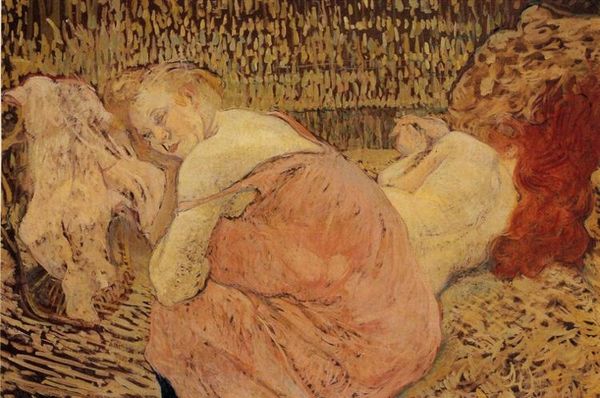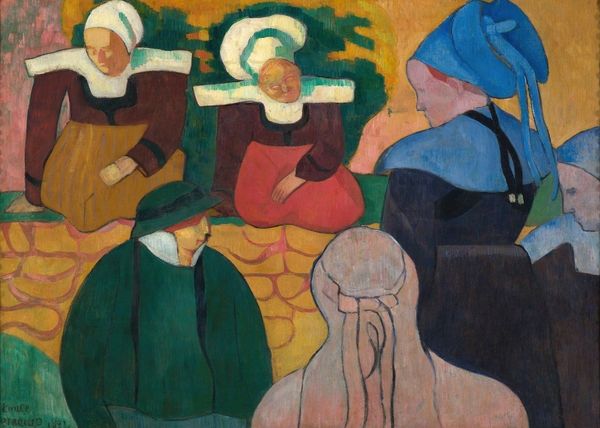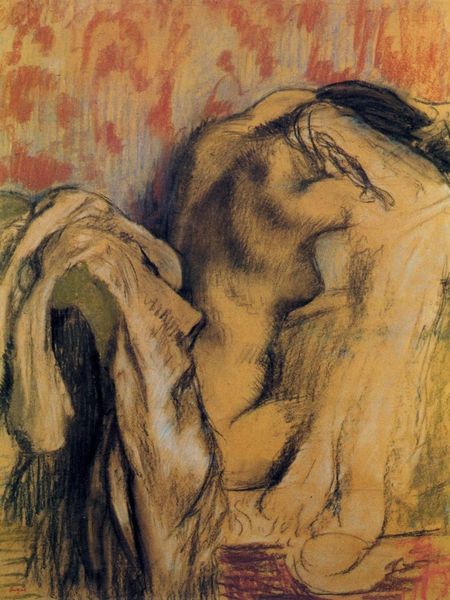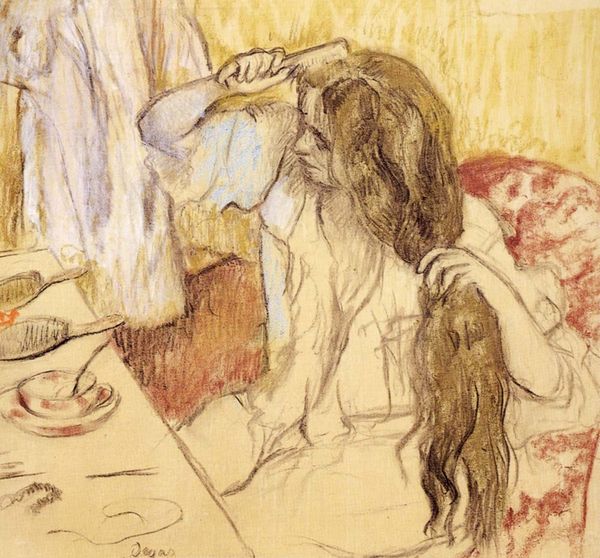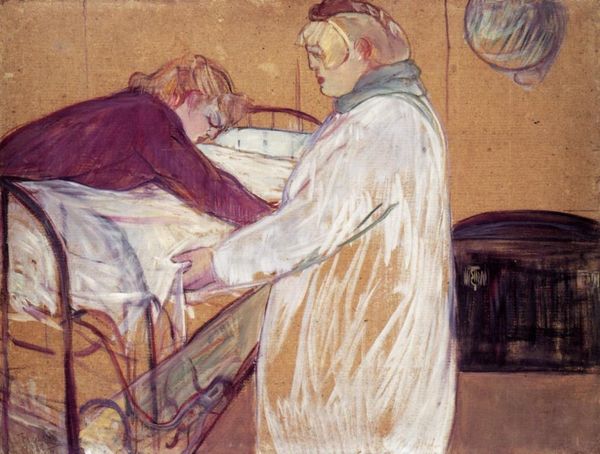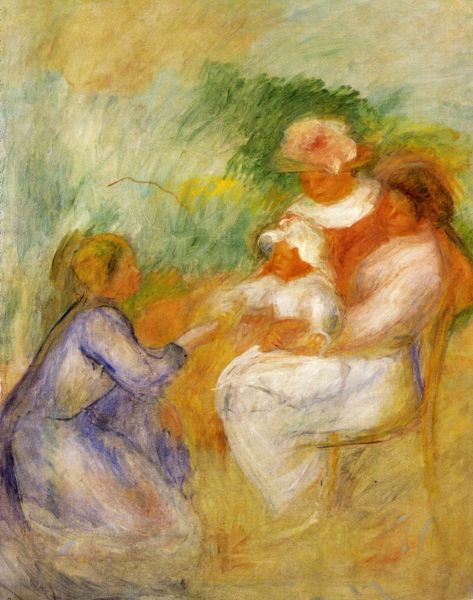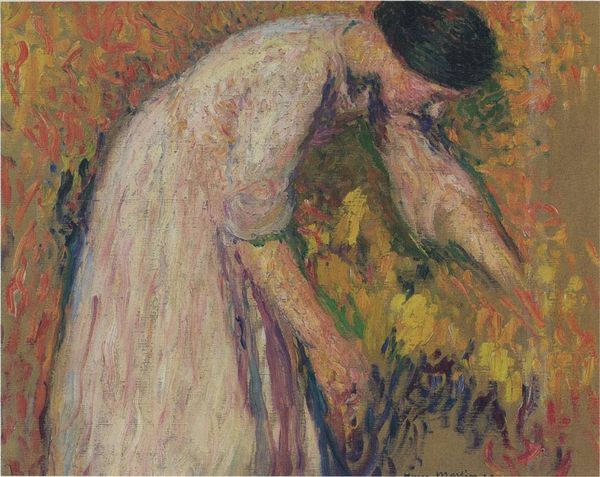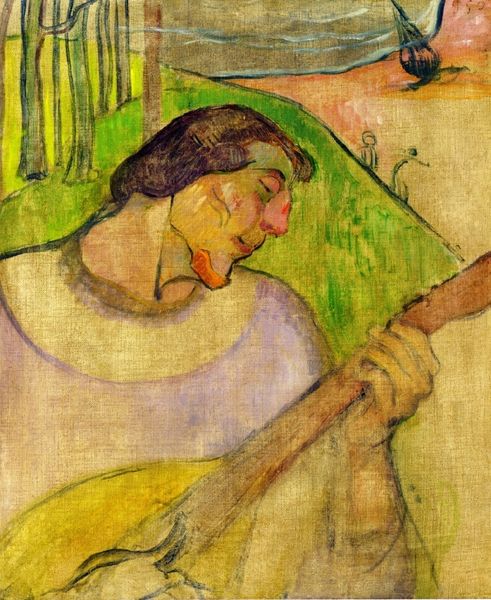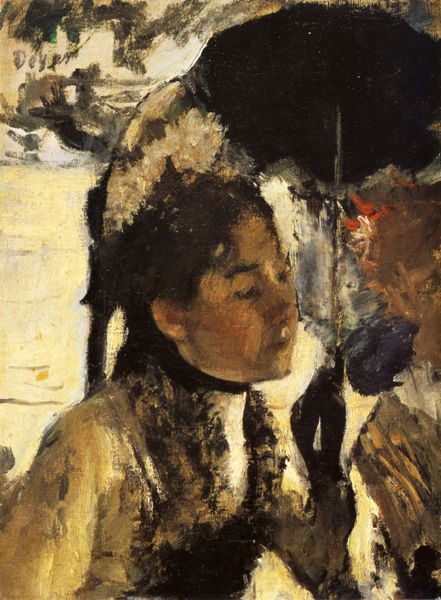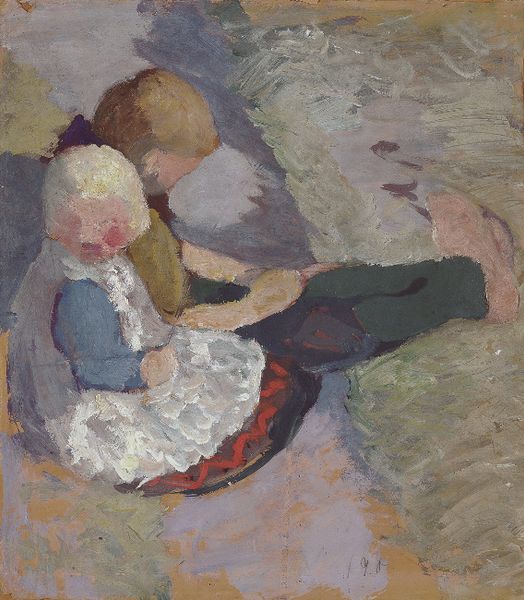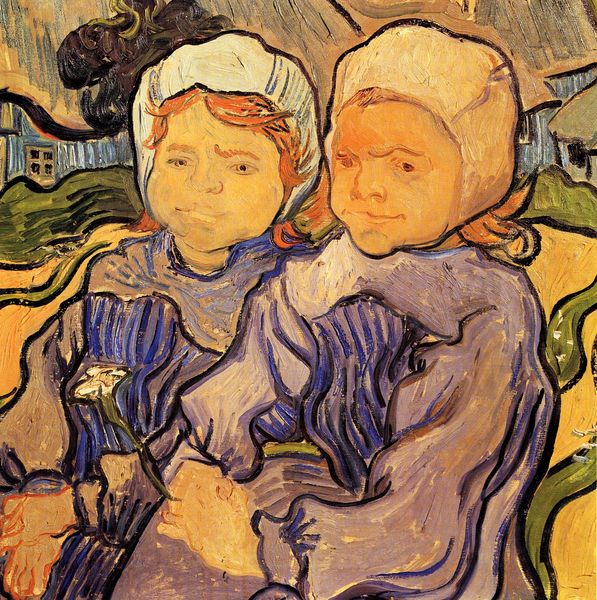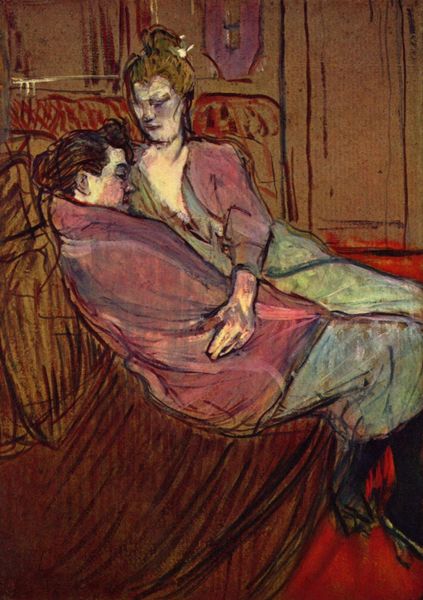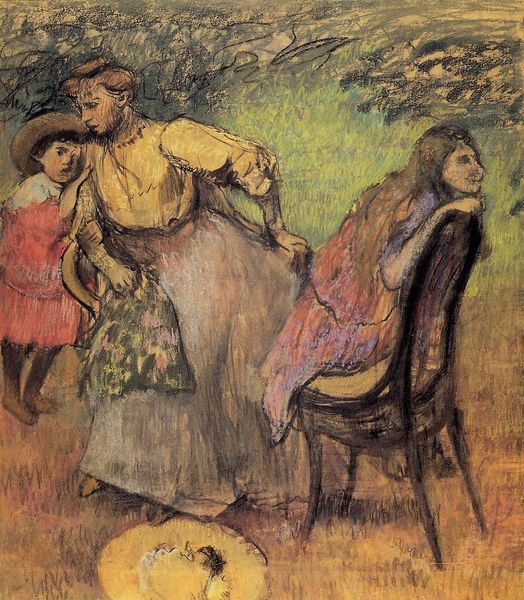
painting, oil-paint
#
portrait
#
painting
#
oil-paint
#
figuration
#
oil painting
#
symbolism
#
genre-painting
#
post-impressionism
Copyright: Public domain
Paul Gauguin created "Human Misery" using watercolor and gouache, presenting a scene dominated by a pervasive yellow. This isn't just a backdrop; it's an environment, a field of emotion that seems to seep into the figures themselves. The composition directs our gaze towards the central, melancholic figure. Her posture, hunched and inward-turning, speaks to a deep sense of sorrow. Gauguin uses color here to amplify this effect. The yellow, while bright, is muted and melancholic, casting a pall over the scene, while the touches of blue and brown in the figure's clothes and hair introduce a somber note, furthering the sense of emotional depth. Gauguin seems less concerned with realistic representation, and more interested in conveying a mood, an emotional state. The flattening of perspective and simplification of form are devices that draw us away from the external world and into the internal, psychological landscape of the painting. It questions the nature of suffering and the human condition.
Comments
No comments
Be the first to comment and join the conversation on the ultimate creative platform.
